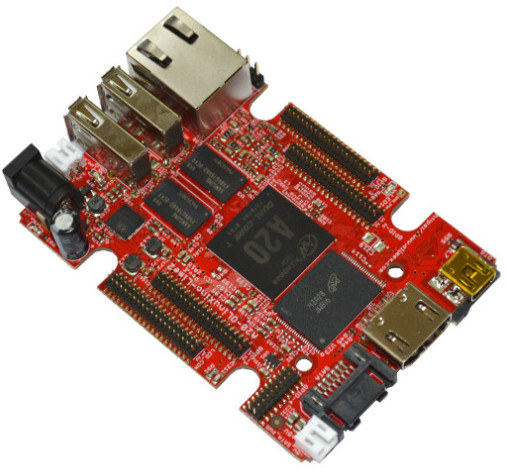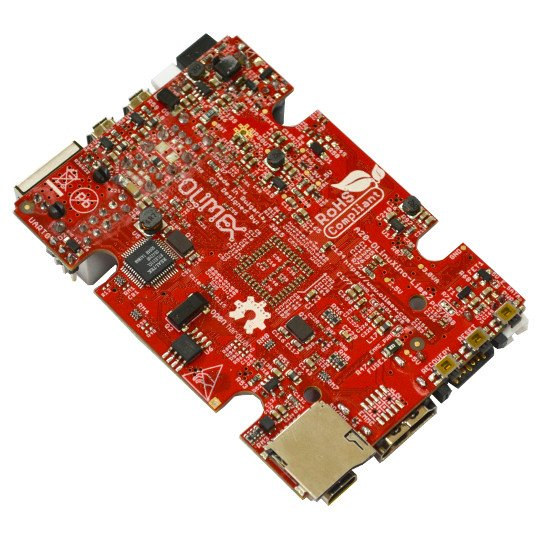A20-OLinuXino-LIME boards are the most popular development board sold by Olimex, likely thanks to reasonable pricing, and Allwinner A20 is one of the rare low cost processor to features an actual SATA interface and Gigabit Ethernet support. The company has now launched a new version A20-OLinuXino-LIME2-eMMC, based on A20-OLinuXino-LIME2-4GB, but replacing the NAND flash by an eMMC flash that should offer both better performance and reliability.
 A20-OLinuXino-LIME2-eMMC specifications:
A20-OLinuXino-LIME2-eMMC specifications:
- SoC – Allwinner A20 dual-core ARM Cortex-A7 CPU @ 1.0 GHz with dual-core Mali 400 GPU
- System Memory – 1GB DDR3
- Storage – 4GB eMMC flash (Micron), SATA data and power connectors, micro SD slot, 2KB EEPROM for MAC address and custom data
- Connectivity – Gigabit Ethernet
- Video Output – HDMI up to 1080p60
- USB – 2x USB 2.0 host ports with power control and current limiter, 1x micro USB-OTG with power control and current limiter
- Expansion – 160 GPIOs on four GPIO headers (0.05” pitch), LCD header
- Debugging – DEBUG-UART connector for console debug
- Misc – Status, battery charge, and power LEDs; 2x buttons with ANDROID functionality and RESET button
- Power Supply – 5V DC; LiPo battery connector with battery-charging capabilities
- Dimensions – 84 × 60 mm
- Temperature Range – 0 to +70C
The board is not pre-loaded with any operating system, but you can find firmware images and instructions on the Wiki, including Debian 8 (Jessie), Debian 7 (Wheezy), and Android 4.2.2 officially supported, as well as several community supported images (Debian & openSUSE). As with most Olimex products, A20-OLinuXino-LIME2-eMMC is open source hardware with all relevant files available for download.
 The announcement also mentions that the 4GB eMMC flash is an industrial grade SLC flash made by Micron that’s specified to work in -40 to +90C temperature range. However, some other components (DDR3 and Ethernet PHY) are only commercial grade components, which limits the board use to 0 to 70C. If you want to use the board is tough environment, the good news is that Olimex is also planning to launch an industrial grade version of the board, but they’ve yet to find an industrial grade Ethernet PHY chip, so suggestions are welcome.
The announcement also mentions that the 4GB eMMC flash is an industrial grade SLC flash made by Micron that’s specified to work in -40 to +90C temperature range. However, some other components (DDR3 and Ethernet PHY) are only commercial grade components, which limits the board use to 0 to 70C. If you want to use the board is tough environment, the good news is that Olimex is also planning to launch an industrial grade version of the board, but they’ve yet to find an industrial grade Ethernet PHY chip, so suggestions are welcome.
A20-OLinuXino-LIME2-eMMC board is now selling for 55 Euros, the same price as the NAND flash version.

Jean-Luc started CNX Software in 2010 as a part-time endeavor, before quitting his job as a software engineering manager, and starting to write daily news, and reviews full time later in 2011.
Support CNX Software! Donate via cryptocurrencies, become a Patron on Patreon, or purchase goods on Amazon or Aliexpress




